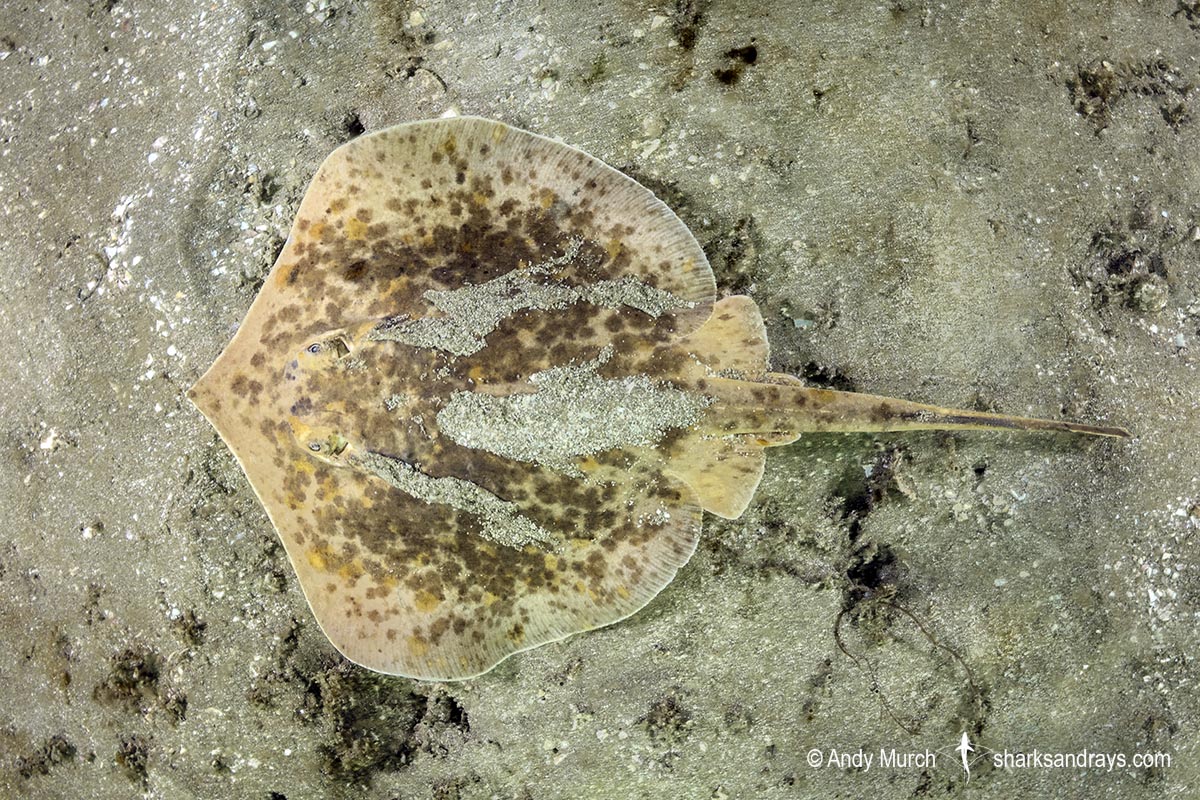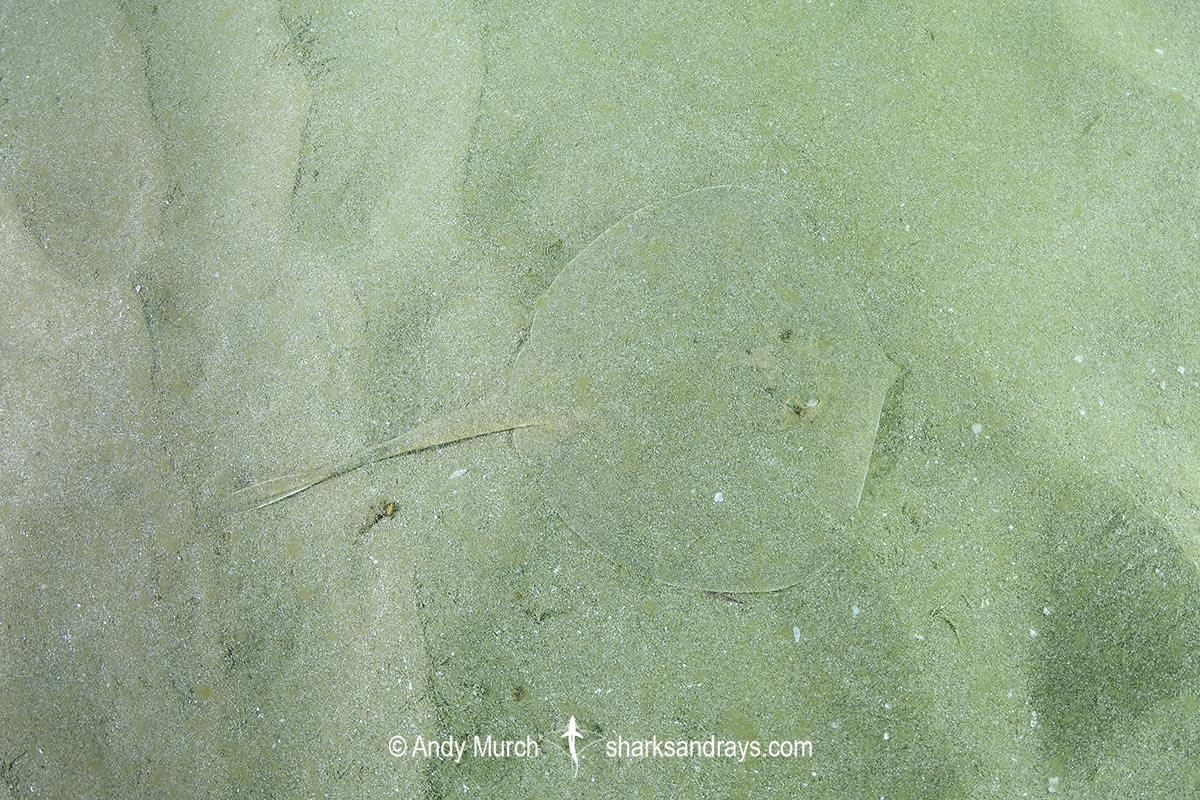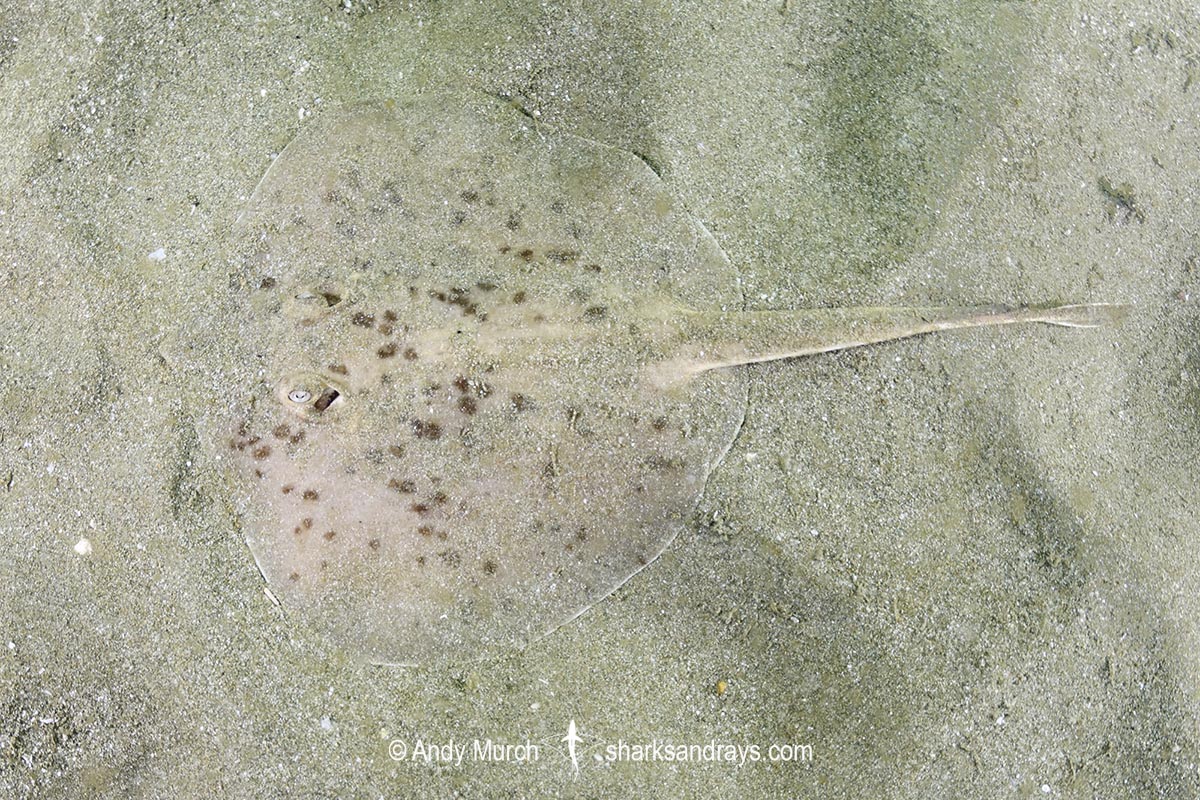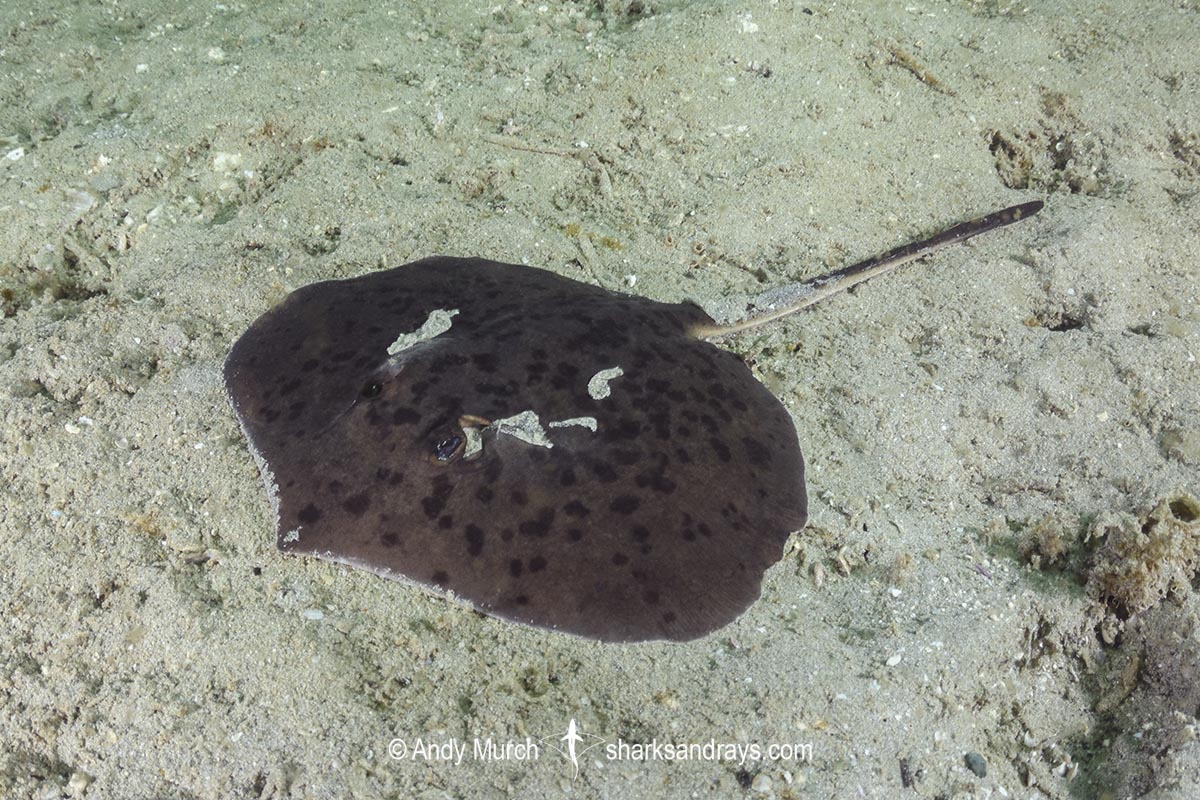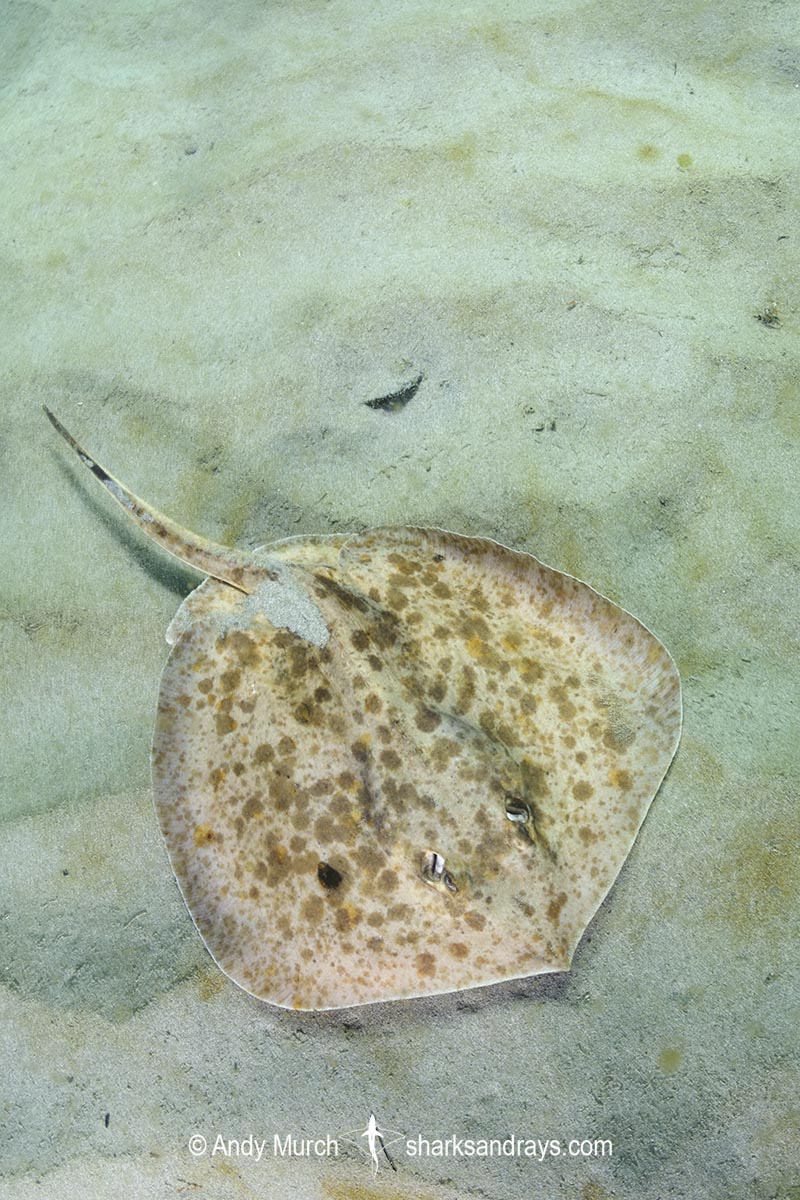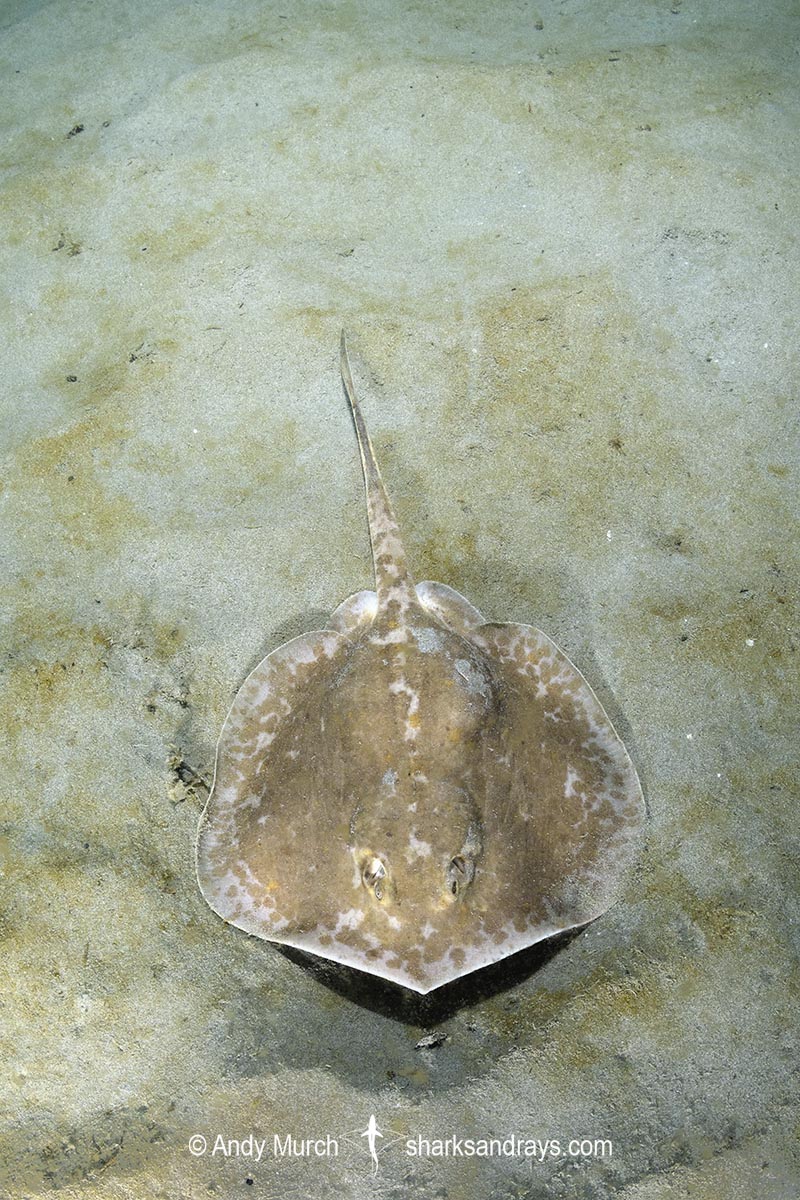Common name(s)
Chilean Round Ray, Blotchy Round Ray.
Identification
A medium-sized round stingray with a sub-circular disc that is wider than long; width 1.1-1.2 x length. Snout obtusely angular. Snout tip acutely pointed; more extended in mature males. Anterior margins of disc straight to mildly concave, apices broadly rounded. Disc roughened near centre line and on snout. Broken or continuous row of backwards slanting thorns on centre line from nape to tail sting. Pelvic fins broadly triangular with convex posterior margins, length slightly exceeding width.
Eyes large; orbit length 0.26-0.23 x snout length. Mouth weakly arched. Nasal curtain skirt-shaped. Nostrils narrowly oval.
Tail long and slender-based. Lateral skin folds absent. Tail length 53-56% of total length. Caudal sting slender, origin slightly anterior to mid-tail. Upper caudal lobe low and very long; 15-18% of total length. Posterior margin of caudal fin tightly rounded.
Colour
Dorsum highly variable. Often beige, pinkish, or dark brown, with irregular dark spots and blotches that may be scattered or so dense they form a solid mass centrally. Spots often extend onto pectoral fins and top of tail. Tail pale laterally. Ventrum pale, sometimes with subtle blotches. Caudal sting and upper lobe of caudal fin dark.
Size
Maximum total length 43cm. Length at birth unknown.
Habitat
Tropical/warm-temperate seas. Found on sandy or muddy substrates from very shallow bays to at least 30m.
Distribution
Eastern Pacific. Found from the Sea of Cortez to Northern Chile.
Conservation Status
NEAR THREATENED
The Cilean round ray Urotrygon chilensis is taken as bycatch of large-scale and small-scale shrimp trawl fisheries and a variety of other artisanal fisheries across its range and is one of the most abundant elasmobranch bycatch species in some areas such as Costa Rica and is common in Guatemala. In contrast, it is rarely encountered in some other countries such as Colombia. It is generally discarded although round rays may be used as bait or fishmeal by artisanal fishers. In the Tehuantepec Gulf, Mexico, demographic models suggest population declines of the Chilean Round Ray under some scenarios, but not under other scenarios; overall the model results were not conclusive to ascertain population trend. Tropical Eastern Pacific round rays have very early age-at-maturity (4 years for the Chilean Round Ray) and life history parameters that demonstrate high biological productivity and therefore some resilience to fishing mortality. Overall, due to levels of exploitation from its exposure to inadequately managed fisheries throughout its range, balanced with high biological productivity, it is suspected that the Chilean Round Ray has undergone a population reduction of 20–29% over the last three generations (20 years), and it is assessed as Near Threatened (close to meeting Vulnerable A2d).
Citation
Kyne, P.M., Charvet, P., Areano, E.M., Cevallos, A., Espinoza, M., González, A., Herman, K., Mejía-Falla, P.A., Morales-Saldaña, J.M., Navia, A.F. & Velez-Zuazo, X. 2020. Urotrygon chilensis. The IUCN Red List of Threatened Species 2020: e.T44647A124436667. https://dx.doi.org/10.2305/IUCN.UK.2020-3.RLTS.T44647A124436667.en. Accessed on 19 January 2022.
Reproduction
Aplacental viviparous. 1-4 pups per litter. Gestation period 4-5 months. Females mature at 4yrs.
Diet
Diet consists mostly of small crustaceans, mollusks, polychaete worms and some fishes.
Behavior
Congregates (probably seasonally) in shallow bays. Camouflages itself under sand when resting.
Reaction to divers
Fairly easy to approach in shallow bays. Bolts once discovered but it is usually easy to pursue. Often found partially buried under sand. Harder to get close to or follow in deeper water.
Diving logistics
Probably fairly common at numerous beaches along the Pacific coast of Central America but rarely encountered around reefs.
I have encountered a few Chilean round rays around Playa del Coco on the Pacific coast of Costa Rica, but they are far more common at Playa El Jobo; about 60km north by car. There are no dive shops in El Jobo but the rays congregate in very shallow water so it is easy to see them while snorkelling.
What’s new
View our full list of updates
Similar species
Rogers Round Ray Quite similar but distinguishable by much sparser, smaller dark spots and proportionately wider disc with more concave anterior margins.
Cimar Round Ray Similarly patterned with dark spots and blotches, but distinguishable by proportionately smaller eyes, rounder disc with rough skin, and tail shorter than disc.

